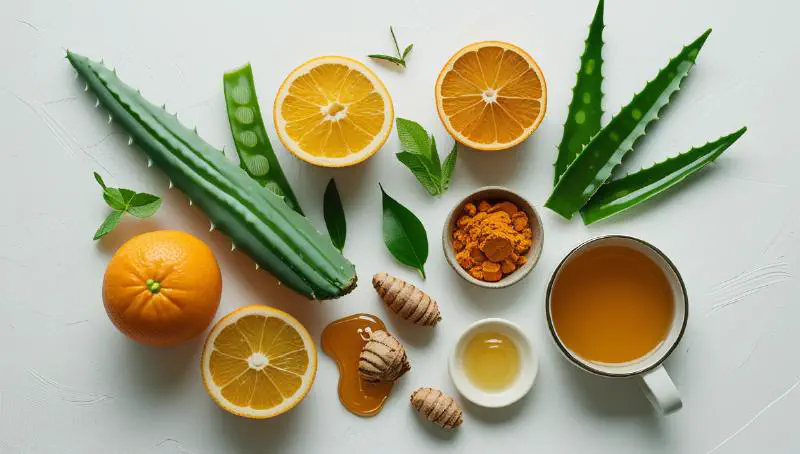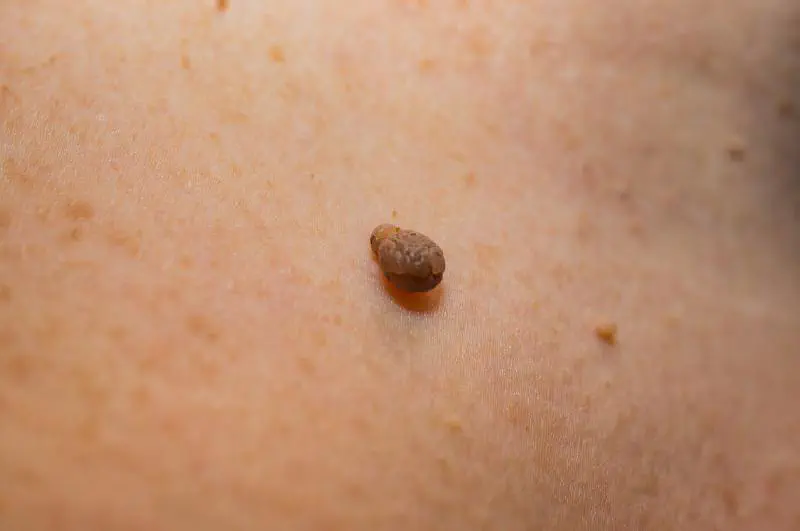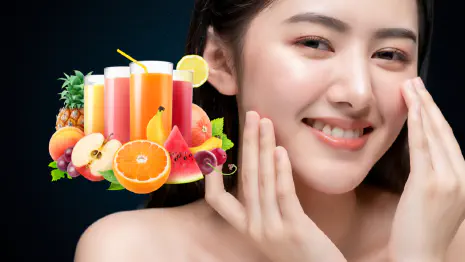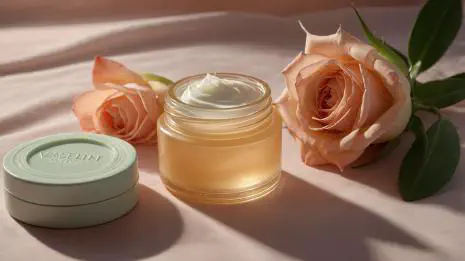In a world obsessed with quick fixes and synthetic solutions, the quest for naturally glowing skin has taken a modern twist by revisiting age-old wisdom. For centuries, ancient practices have offered holistic approaches to skincare, and today, these time-honored methods are seeing a resurgence as they blend seamlessly with contemporary techniques. The balance between understanding individual skin needs and harnessing the power of natural elements presents an opportunity for skincare enthusiasts to achieve radiant results.
An essential part of this journey is recognizing the unique skin types dictated by various doshas in Ayurveda, allowing the customization of routines tailored to individual needs. Integrating key Ayurvedic ingredients such as turmeric, neem, and rosewater opens the door to myriad benefits, from detoxification to enhanced hydration. In addition to diet, exercise and stress management play pivotal roles in nurturing healthy skin, forming a comprehensive approach to beauty.
This article delves into the fusion of ancient wisdom and modern skincare, guiding you through identifying your skin type, crafting personalized routines, and embracing a balanced lifestyle. By marrying the old with the new, the path to achieving glowing skin naturally becomes not just possible, but sustainable and fulfilling.
Understanding Skin Types and Doshas
In Ayurveda, understanding your skin type is key to achieving glowing and balanced skin. Skin types are based on three doshas: Vata (wind), Pitta (fire), and Kapha (water and earth), which influence one’s constitution. Each dosha has unique characteristics and affects your skin’s appearance and health. For example, Vata skin tends to be dry and rough, while Pitta skin often shows signs of sensitivity and oiliness. Kapha skin, on the other hand, is thicker and more prone to oiliness. Knowing your dominant dosha is crucial for choosing the right skincare practices. Ayurvedic skincare focuses on harmonizing your dosha with products and routines tailored to the seasons and your specific needs.
Identifying Your Skin Type
To identify your skin type, consider the qualities and tendencies linked to the three doshas. Vata skin is often dry, cold to the touch, and prone to wrinkling. It needs consistent hydration with oil-based moisturizers. Pitta skin can be sensitive and oily, frequently experiencing breakouts and flare-ups. This type benefits from cooling and soothing ingredients like aloe vera and cucumber. Kapha skin typically has large pores and excess oil, requiring regular cleansing and exfoliation to stay balanced. Natural ingredients like turmeric and neem can help manage these traits. Understanding your dosha helps in selecting skincare products and practices that keep your skin healthy and radiant.
Recognizing Doshas in Skincare
In skincare, recognizing the role of doshas is essential for maintaining skin health. Doshas like Vata, Pitta, and Kapha must be balanced to optimize your skincare routine. For Kapha skin, characterized by enlarged pores and oiliness, regular cleansing and exfoliation are crucial. Pitta becomes dominant in summer, increasing the risk of acne and irritation due to heat. For Vata skin, which tends to be dry, moisturizing is vital. A personalized Ayurvedic regimen considers your dosha and potential imbalances, tailoring skincare practices and diet to maintain glowing skin. Understanding and moderating your dosha can lead to better skin health, addressing concerns at their root.
Key Ayurvedic Ingredients for Glowing Skin
Glowing skin often starts with a holistic approach, and Ayurveda offers time-tested methods that prioritize skin health naturally. Using ingredients like turmeric, neem, sandalwood, and rosewater can help maintain radiant skin. Ayurveda focuses on balancing your dominant dosha, which plays a key role in skincare routines tailored to your skin type. These interactions between the ingredients and your skin enhance blood circulation, collagen production, and more. Let’s explore how these powerful natural ingredients contribute to healthier, glowing skin.
Benefits of Turmeric
Turmeric is a star in Ayurvedic skincare due to its multiple skin benefits. With curcumin as its active component, turmeric provides strong antioxidant and anti-inflammatory properties. These aid in eliminating harmful free radicals from the skin, preventing damage. For those dealing with oily skin or redness, turmeric’s calming effects work wonders. Mixing turmeric with honey creates a nourishing mask that soothes and brightens the skin. Additionally, turmeric enhances collagen production, making the skin supple and glowing. Using turmeric in face packs, like a turmeric and yogurt mask, can also help reduce acne, imparting a natural glow.
The Role of Neem
Neem’s antibacterial and purifying qualities make it essential for acne-prone or oily skin. Known as a natural antiseptic, neem treats skin conditions like acne and eczema. It can be used in various forms, such as neem powder or neem-infused water, acting as a toner to control breakouts. Neem oil can be applied directly to problem areas for its skin-healing properties. More than just a topical remedy, neem serves as a blood purifier. It helps to prevent breakouts and rashes, leading to clearer skin. With neem, maintaining skin health becomes a natural process.
Using Sandalwood for Skin Health
Sandalwood is prized in Ayurveda for its soothing, cooling effects, particularly for sensitive or Pitta-type skin. It helps reduce redness and irritation, promoting calm and radiant skin health. Skincare products often include sandalwood for its brightening and anti-inflammatory properties. Combining sandalwood with turmeric can revive dullness and tighten your skin. Suitable for soothing irritated skin, sandalwood can be used in face masks when mixed with water. Its floral fragrance adds an uplifting scent to your routine, making the experience enjoyable. For those seeking healthy, radiant skin, sandalwood offers both physical and sensory benefits.
Rosewater for Hydration and Toner
Rosewater is celebrated as a hydrating toner in Ayurvedic practices. It cools and balances the skin, making it ideal for Pitta doshas. An alcohol-free toner made with rosewater refreshes and rehydrates the skin, helping to prevent dehydration. The use of rosewater as a toner helps balance the skin’s pH and tighten pores. This prepares the skin for better absorption of moisturizers and serums. Rosewater’s refreshing and balancing properties suit various dosha-specific skincare routines. After cleansing, a rosewater toner preserves the skin’s natural oils, providing a soothing, calming effect for the whole day.
Building a Personalized Skincare Routine
Creating a skincare routine is an essential part of achieving healthy, glowing skin. An Ayurvedic approach tailors skincare to an individual’s unique dosha type, which considers your body’s energy patterns. This method addresses skin concerns at their root, focusing on long-term benefits. You can adjust your skincare regimen according to seasonal changes and personal needs. Consistency is important in Ayurvedic practices, emphasizing gradual development for effective results. The inclusion of self-massage and herbal masks can promote collagen production, enhancing your skin’s natural glow. This personalized attention ensures a routine that is both relaxing and revitalizing.
Crafting a Routine Based on Skin Needs
When crafting a skincare routine, understanding your unique skin type is crucial. Ayurveda offers a holistic approach, aligning skincare with your dosha and adjusting it for the seasons. This method dives into the root causes of skin issues, rather than just treating problems on the surface. By boosting collagen and improving overall skin texture, Ayurvedic principles aid in creating radiant, healthy skin. Seasonal detoxifications also help remove toxins, enhancing natural beauty. Practices like self-massage further support the skin’s health, embodying ancient Ayurvedic wisdom.
Incorporating Natural Face Packs
Natural face packs are a wonderful addition to any skincare routine. Designed to nourish and cleanse, these packs help your skin breathe better. Many ingredients are likely in your kitchen, like chickpea flour and aloe vera, making it easy to prepare at home. Ayurvedic packs use herbs and natural components, providing a soothing touch without harmful chemicals. Regular herbal mask inclusion brings consistent benefits while ensuring your skin stays rejuvenated and protected. By avoiding chemicals, these packs reduce the risk of irritations, presenting a kinder option for sensitive skin.
Importance of Daily Hydration
Hydration is vital for maintaining youthful, radiant skin. Consuming at least 8-10 glasses of water a day helps flush toxins, keeping skin plump and smooth. Drinking warm water each morning can also enhance skin health. Proper hydration reduces the risk of wrinkles, scars, and acne, by maintaining the skin’s elasticity. If you neglect hydration, you may experience dry skin, while digestive issues could manifest as inflammation. Thus, making sure to drink enough water daily contributes significantly to maintaining skin’s vibrancy and health. Through these practices, your skin remains hydrated and rejuvenated.
Integrating Exercise and Lifestyle for Skin Health
Achieving radiant skin isn’t just about using the right creams. It’s about embracing a holistic approach that includes regular exercise and a balanced lifestyle. Physical activity boosts blood circulation, bringing more oxygen and nutrients to your skin for a natural glow. By including exercises like yoga, you detoxify and promote healthy skin from the inside out. Additionally, drinking enough water and using natural moisturizers keep your skin hydrated and smooth. Abhyanga, a self-massage with oils, balances skin pH and reduces oiliness. A blend of exercise, healthy habits, and Ayurvedic practices nurtures your skin, helping it stay vibrant and healthy.
Exercise for Skin Vitality
Exercise is crucial for vibrant, healthy skin. By enhancing blood flow, exercise helps reduce dark spots and dead skin cells, giving you a fresh look. Including activities such as yoga not only helps in detoxifying through sweating but also improves skin texture. In Ayurvedic practices, exercise is a way to balance one’s dominant dosha. Sweat purges impurities, while movement improves blood circulation, keeping your skin young. Regular exercise also promotes collagen production, vital for maintaining elasticity. Embrace regular activity to support skin vitality and overall well-being.
Meditation and Stress Management
Stress can wreak havoc on your skin, exacerbating skin concerns like acne or dullness. Meditation offers a powerful antidote, helping you maintain youthful, glowing skin by lowering stress levels. By making meditation a part of your daily routine, you enhance your immune system and foster healthy skin. This practice is rooted in Ayurvedic principles that emphasize the interconnectedness of mind, body, and skin. By regularly managing stress, you support a calm and balanced lifestyle, aligning with Ayurvedic practices to promote both inner peace and outer radiance. Meditation offers a natural path to both beauty and health, refreshing your mind and skin alike.
Detoxification Through Ayurvedic Practices
Ayurveda offers a holistic approach to achieving glowing skin. Through detoxification practices, it aims to purify the body and enhance skin health. These methods balance the doshas, which are the energies governing bodily functions. Techniques like herbal steaming and self-massage, known as Abhyanga, promote blood circulation and stress reduction. This helps in the removal of dead skin cells. Using natural ingredients like neem is also a part of this approach. Neem has antibacterial properties and is especially useful for sensitive skin types prone to acne. By focusing on internal purity through diet, hydration, and sleep, these practices support glowing, healthy skin.
Panchakarma and Skin Detox
Panchakarma is an ancient method in Ayurveda for detoxifying the body. This process is designed to cleanse, rejuvenate, and restore balance, resulting in radiant skin. It includes five main procedures: Virechan cleanses, Vaman purges, Basti offers massages or enemas, Rakta Moksha detoxifies blood, and Nasya clears nasal passages. Each of these steps is vital for removing toxins and achieving healthy skin. Conducting Panchakarma typically requires visiting an Ayurvedic practitioner, and it often takes a minimum of five weeks to complete. By balancing the doshas, Panchakarma contributes significantly to maintaining skin health and luminosity. Regular detox through Panchakarma is encouraged in Ayurveda for a naturally glowing complexion.
Benefits of Clean Eating
Clean eating plays a crucial role in promoting skin health. A nutritious diet not only boosts metabolism but also helps the body defend against foreign invaders. As a result, skin health improves, becoming more radiant. Fresh fruits and vegetables are rich in essential vitamins and minerals, lending the skin a youthful glow. Avocados, with their healthy fats and vitamins E and C, support skin rejuvenation. Hydration is also essential; drinking ample water, lemon water, or herbal teas aids liver and kidney function. This internal detoxification contributes to clearer skin. Foods high in antioxidants, like berries and asparagus, nourish the skin from within. They help maintain a healthy and radiant complexion, making clean eating a cornerstone for glowing skin.
Modern Techniques Complementing Ancient Practices
Blending ancient Ayurvedic rituals with modern skincare routines can yield remarkable results for glowing skin. Ayurveda emphasizes balance and harmony through its holistic approach. By integrating these principles, we can enhance the effect of contemporary skincare products. Oil cleansing and herbal steaming are two classic techniques that complement today’s serums and moisturizers. They work by preparing the skin to better absorb these modern solutions. This combination of methods focuses on both external applications and internal cleansing, supporting comprehensive skin health. As a result, integrating Ayurvedic practices with modern techniques offers a path to radiant and healthy skin. By addressing both internal balance and external care, you can achieve a glowing complexion.
Using Targeted Serums
Targeted serums are an essential component for boosting skin radiance. Products like Kumkumadi Serum are known as glow-boosting solutions for their effectiveness. Such serums should be a staple in your daily skincare routine. They contain active ingredients like antioxidants and act to even skin tone, reduce dark spots, and increase natural brightness. One highly recommended choice is the 100% PURE Vitamin C Serum, which contains turmeric. This combination enhances skin glow and helps with pigmentation concerns. By using these serums consistently, you can achieve significant improvement in skin tone and glowing skin.
The Advantages of Face Oils
Face oils offer impressive benefits for achieving a radiant complexion. Coconut oil, rich in essential fatty acids and antioxidants, nourishes and enhances glow. Argan oil provides deep hydration through techniques like Ayurvedic Abhyanga. This practice involves massaging oils into the skin to boost blood circulation and retain moisture. Jojoba oil, similar to the skin’s natural oils, can balance oil levels and sometimes remove the need for a separate cleanser. Face oils, when gently massaged, also help enhance circulation. The result is brighter skin with reduced dullness. Using face oils consistently can contribute to healthy, glowing skin by improving both moisture and skin tone.
Developing a Balanced Diet for Radiant Skin
Achieving glowing skin isn’t just about what you apply on the outside. What you feed your body plays a vital role in your skin’s health and appearance. A balanced diet filled with essential vitamins and minerals can enhance your skin’s natural glow. Foods rich in Vitamin C, like oranges and strawberries, help boost collagen production. This keeps your skin firm and reduces pigmentation. Healthy fats in avocados provide much-needed nourishment and hydration. Nuts like walnuts and almonds supply Vitamin E, which keeps skin soft and radiant. Fresh fruits and vegetables are key for youthful skin due to their nutrient-rich content. Embracing natural ingredients and staying well-hydrated reflects Ayurvedic principles. This approach balances your doshas and promotes skin radiance, helping you maintain healthy skin.
Foods for Skin Health
A diet filled with specific foods can greatly benefit your skin’s health and glow. Fresh fruits such as papaya, guava, mangoes, and kiwi are superb for your skin because they are packed with vitamins and minerals. Vegetables like carrots, broccoli, and green leafy greens also contribute to vibrant skin. Their rich nutrient content supports overall skin health. Drinking plenty of water and natural juices helps keep your skin hydrated and shining. Including citrus fruits, nuts, and seeds in your meals provides essential nutrients and antioxidants. You can also enjoy herbal teas, which further nourish the skin. By focusing on whole foods and nutritious drinks, you’ll foster a natural glow and improve your skin texture over time.
Avoiding Skin-Damaging Foods
While some foods nourish your skin, others can cause damage. It’s important to reduce or avoid certain foods for clearer skin. Spicy foods might taste great but can negatively affect your skin health. Similarly, consuming alcohol can lead to a dull complexion as it dehydrates the skin. Caffeine is another culprit; too much of it weakens your skin’s glow. Fried foods, heavy in oils, contribute to oiliness and potential breakouts. Excessive sugar consumption can disturb insulin levels, promoting inflammation and skin issues. Opting for a diet with less spicy, sugary, and fried foods will help you avoid these pitfalls, promoting a smoother, healthier complexion. By being mindful of these constraints, you can protect your skin from damage and maintain its radiance.
Conclusion: Fusing Ancient Wisdom with Modern Skincare
Modern skincare benefits from the integration of Ayurvedic practices. This holistic approach balances traditional and contemporary methods for radiant skin. Understanding one’s dominant dosha is key in tailoring routines. This personal touch enhances skin texture and health.
Ayurvedic rituals, such as oil cleansing and herbal steaming, pair well with modern serums and moisturizers. These practices use natural ingredients like turmeric, which boosts collagen production, and clove oil, which reduces acne scars.
Skin health demands attention to seasonal shifts. As winter shifts to spring, an Ayurvedic skincare routine advises detoxification and rejuvenation. This keeps the skin hydrated and glowing.
Both Ayurvedic and modern practices acknowledge stress as a factor in skin concerns. Meditation and stress-reduction techniques enhance beauty from the inside out. They boost blood circulation and improve skin texture.
The following table shows how Ayurvedic and modern methods complement each other:
| Ayurvedic Practices | Modern Skincare Techniques |
|---|---|
| Oil Cleansing | Serums |
| Herbal Steaming | Moisturizers |
| Turmeric & Clove Oil | Collagen Boosters |
By combining these approaches, we can ensure glowing, healthy skin that reflects both ancient wisdom and modern benefits.







